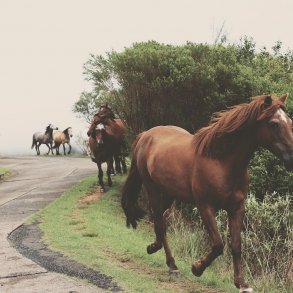By George Pór for Enlivening Edge Magazine
Ecstatic experience in a business meeting is not happening to me every week. I felt it’s worth writing my next column about. In fact, I can’t not, because the aftershocks of the experience, as I am writing, are almost as strong as the original was during the meeting.
No, I didn’t take any psychoactive supplement; I experienced “ex stasis” in its original meaning: standing outside the routine equilibrium of everyday awareness. In everyday awareness, our senses suggest that whatever we see, is what it is. The experience of this meeting convinced me “what we are” is just one of the possibilities of “what is.”
I was the guest of Encode’s General Circle, during their Governance meeting. There were three proposals on the agenda to make decisions about. I am a member of a number of organizations running on the Holacracy® rule set for organizing their work, so it was not the first time I observed Integrative Decision-Making. But it was the first time I saw the process exercised by a team of seasoned Hola practitioners, and that made all the difference.
Phrases describing the ambiance of the meeting could be: relaxed yet focused, serious business yet threaded with lightness and humor, appreciative attention yet not shying away from cognitive altercations. The people around the table call themselves “purpose agents;” I found it a very fitting label.
What kept pulling the conversation into a dynamic harmony was a shared and palpable dedication to the purpose of their respective roles, carefully crafted to serve the evolutionary purpose of the organizations as a whole. With that kind of hierarchy of purpose, of course, they don’t need a manager telling them what to do.
When proposals introduced reached the “Objections?” round, I was struck by the beauty of the conscious efforts the speakers made to speak from the perspective of their role, not their personal idiosyncrasies, as the facilitator was testing the validity of the objections according to the criteria shared by all.
During that process, sometimes I felt if I were witnessing the eloquent dance of a dharma combat, the ancient Buddhist art in which what is emerging from the exchange is not only a refined truth. It is also the participants’ growing competence to respond to challenges thrown at them, from a perspective larger than their ‘small self.’
Yet, the dance was not devoid of passions, emotions, sympathies, aversions, and other attributes of being human. They just didn’t take over what the collaborative shaping of the organization’s work needed.
As a guest, I was not actively participating in the meeting’s processes, at least not outwardly. Much was happening inside me. The most remarkable was the spontaneously-arising question: What is really happening here? The “really” part took me into ever-deepening layers of observation.
- On the surface, it was just an ordinary business meeting where participants took some practical decisions necessary for refining and further developing their collaboration.
- Just below that surface, also happening with every decision, was that the life of the organization, how work was getting organized, took on a slightly new shape.
- In that very process, just by participating in it, the purpose agents grew their “Integrative Decision Making” muscles and gradually got more savvy about how to use them. That’s been happening not only at the individual level, but the Circle itself grew its collective intelligence.
- But that’s not all. Encode doesn’t operate in a vacuum. Thanks to having Holacracy, the most robust and mature system of distributed governance, as its operating system, Encode’s discoveries contribute to the shared, actionable knowledge of a fledgling field of Self-Organizing Enterprises.
- Last, but not least, I was also present to something else that was happening, maybe unbeknownst to the participants of the meeting. It was a small but essential contribution to carve a new groove, create a new pattern in humanity’s journey to emancipation from millennia of repressive division of labor that sorted us into command-givers and command-takers.
The funny thing was that as I was diving deeper in these subsequent layers of realization, the previously-seen did not fall away; I remained present to them all. I was still present in the room and enjoying the masterful facilitation of the meeting—and the sometimes heated but always respectful exchanges—while realizing the magnificence of the scene in all the other, invisible dimensions.
Back to the right-here, right-now moment of the meeting, it’s clear for me that what enabled this extraordinary team play, besides Holacracy’s smart process rules, is that the players trust each other, and are able to challenge each other without defensiveness arising. The challenges and even criticism are embraced with curiosity and self-inquiry.
This unplanned deep dive into dimensions of organizational reality unfolding from one another made me also realize that these dimensions have always been there, even in myself, without my paying attention to them. But then I remembered Goethe’s words, “Each phenomenon in nature, rightly observed, wakens in us a new organ of inner understanding.”
That experience of simultaneously holding, and being held by, the perspectives outlined in the 5 bullet points above was ecstatic… literally: I was out of the stasis of the daily routine, in which I see my surroundings through only one lens at a time.
 Cultivating our capacity to learn from our processes (inner and outer) can grow our much-needed collective sensing organs. Imagine what could become possible if an organization introduced in the three components of the Encode’s “Self-Organizing Enterprise” (SOE) model a role accountable for tending its collective intelligence?
Cultivating our capacity to learn from our processes (inner and outer) can grow our much-needed collective sensing organs. Imagine what could become possible if an organization introduced in the three components of the Encode’s “Self-Organizing Enterprise” (SOE) model a role accountable for tending its collective intelligence?
My observations at the meeting begets another question too: how can the intentional cultivation of collective intelligence serve organizations in transformation?
Some of the answers seems to be intuitively obvious, but in my experience, until they spelled out and made explicit they won’t get enough attention. To explore that further, let’s peel back the layers of my observations, in reverse order, starting with the biggest one.
Being aware of the larger evolutionary context is also about realizing that the universe is inherently self-organizing so by shifting to self-organization in our work, we will be better aligned with and supported by it.
Then comes the question, what time is it on Earth? What difference can it make for how we do our daily work if we are fully conscious of the fact that we are living not in an age of change, but in the change of ages?
A lot. Suddenly we see ourselves not as a brook struggling on the hot summer rocks to make it to the river, but as a drop in the powerful evolutionary waves on the ocean of Emergence. Or, with another metaphor, we start seeing our work as part of an ecosystem of transformation, where everything is co-evolving. That seeing liberates us from insularity and spurs curiosity about what we can learn from our brothers and sisters engaged in this transformational work, across the town or the planet.
Learning, the development of new capabilities, is happening the most easily in mutually supportive relationships. When we do something for the first time, we don’t produce only the direct outcome of our action. We also increase our capability to do that “something” in the future.
Aware of the equal importance of that second outcome, we grow fond of our communities of practice, where our creative competences are developing faster. Thus, the positive feedback loop between autonomy and community kicks in: more intelligent and capable collectives make their members more intelligent and capable, and vice versa. When that happens, we can listen better to what is needed for easing the journey of our organization in the direction it wants go.
How could our meetings be, when all those conditions are present and embodied? My experience of the Governance meeting at Encode gave me a sneak preview. How can we make that kind of experience more common in all next-stage organizations? If you’re working in one, and inspired by that question, let’s discover the practice-driven answers together.

George Pór is an evolutionary thinker and a strategic learning partner to visionary leaders in business, government, and civil society. He is the originator of Enlivening Edge, and has been publishing the Blog of Collective Intelligence since 2003. A select list of his articles and book chapters on the fields of collective intelligence, organizational and social renewal can be found here. More about George’s work on the enlivening edge of planetary transformation is here.





“Some of the answers seems to be intuitively obvious, but in my experience, until they spelled out and made explicit they won’t get enough attention.” Just so and I found this article helpful in spelling out many aspects of the shift we’re in. The shift we’re in gathers momentum by being closely observed, spoken again from our own words and experience. There’s a second (and a third . . . ) harvest that can come. And it’s transmissable!
Andrew, I much appreciated your words:
> The shift we’re in gathers momentum by being closely observed, spoken again from our own words and experience.
Indeed, the shift has only our observations and sharing them, to become conscious of itself!
> There’s a second (and a third . . . ) harvest that can come.
Would you help it coming from the “Enlivening Edge” Community Calls?
Yes George, I’m looking forward to those Enlivening Edge Community Calls. I feel they’ll help me connect more deeply and personally to the evolving edge. And no doubt meet amazing people. (And they will lead to more deep learning and more amazing people . . . ) Woo-hoo!